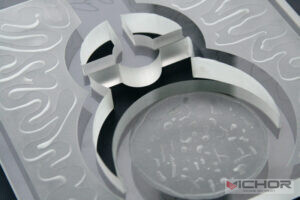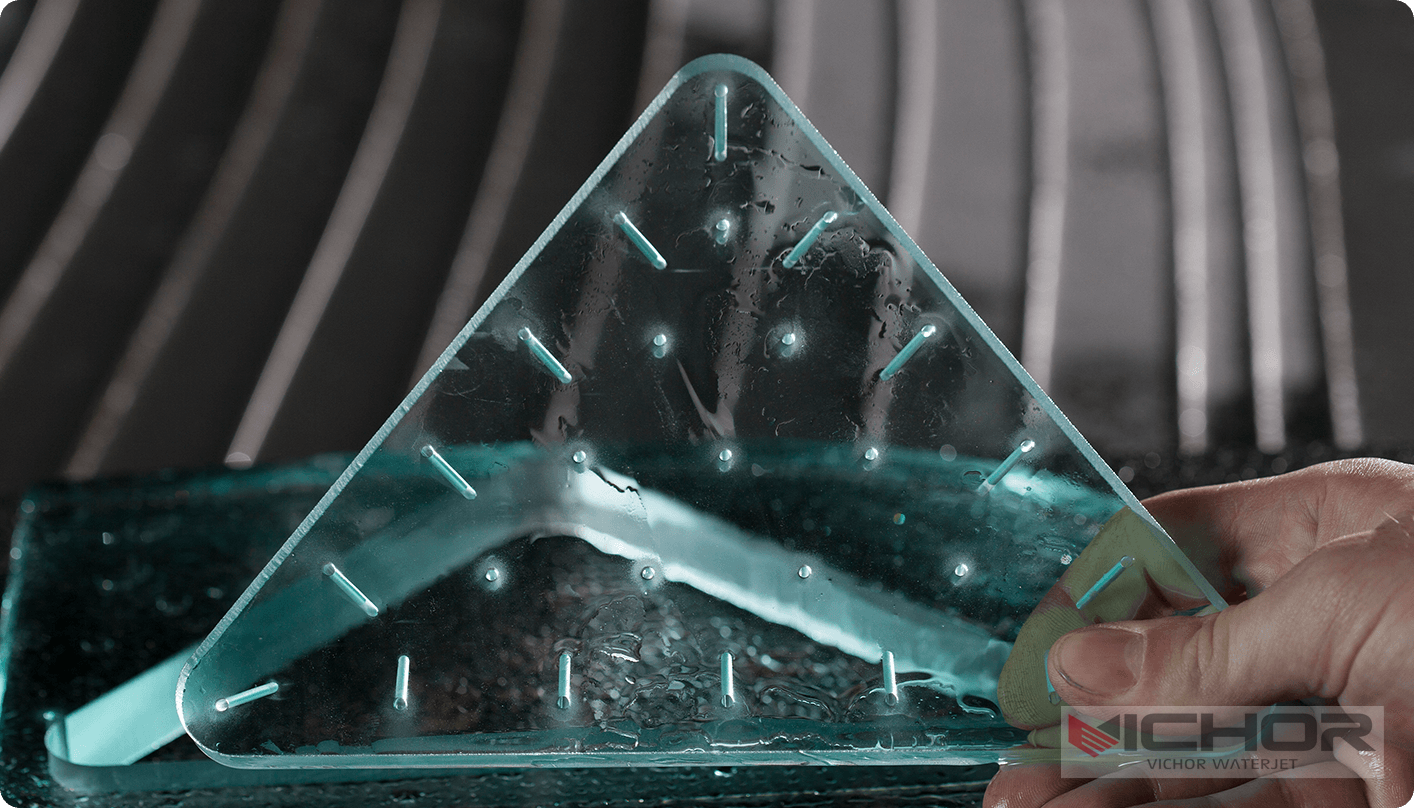
Waterjet Cost Per Inch: The Ultimate 2025 Guide to Pricing and Savings
When it comes to precision cutting in manufacturing and fabrication, waterjet technology stands out for its versatility and accuracy. But one question that consistently pops up among professionals and hobbyists alike is: what exactly is the waterjet cost per inch? This isn’t just a casual inquiry—it’s a critical factor that can make or break your project budget. Understanding this metric helps in planning, comparing services, and avoiding unexpected expenses. In this comprehensive guide, we’ll dive deep into every aspect of waterjet cost per inch, from the core basics to advanced technological insights. Whether you’re a seasoned engineer or a DIY enthusiast, you’ll find actionable information to navigate the costs effectively. Let’s start by unraveling why this cost measure is so pivotal in today’s industrial landscape.
What Is Waterjet Cutting and Why Does Cost Per Inch Matter?
Waterjet cutting is a process that uses a high-pressure stream of water, often mixed with abrasives, to slice through materials like metal, stone, glass, and composites. It’s renowned for its precision, minimal heat-affected zones, and ability to handle complex shapes. But the waterjet cost per inch is more than just a number—it’s a key indicator of efficiency and affordability. This cost typically refers to the price charged for each linear inch of cut, and it varies based on factors like material type, thickness, and machine capabilities. For businesses, keeping tabs on the waterjet cost per inch can lead to significant savings, especially in high-volume projects. It’s a straightforward way to compare quotes and ensure you’re not overpaying. In essence, mastering this concept empowers you to make informed decisions, whether you’re outsourcing work or investing in your own equipment.
Key Factors Influencing Waterjet Cost Per Inch: A Detailed Comparison
The waterjet cost per inch isn’t a one-size-fits-all figure; it fluctuates due to several variables. By comparing these factors, you can better anticipate expenses. First, material type plays a huge role—softer materials like foam might cost less per inch, while harder ones like titanium drive up the price due to slower cutting speeds and higher abrasive use. Thickness is another major player: thicker materials require more time and energy, increasing the waterjet cost per inch. For instance, cutting a 1-inch steel plate could be 20-30% cheaper per inch than a 3-inch plate. Machine efficiency and age also matter; newer systems with advanced pumps might have higher upfront costs but lower per-inch rates due to faster operation. Additionally, operational costs like electricity, labor, and maintenance feed into the final waterjet cost per inch. When comparing services, don’t just look at the base rate—consider the overall value, including setup fees and minimum charges. This comparative approach helps you spot hidden costs and choose the most cost-effective option.
Applications and Selection Guide: How to Choose the Right Waterjet Service Based on Cost Per Inch
Waterjet cutting finds applications across industries, from aerospace and automotive to art and architecture. In each case, the waterjet cost per inch directly impacts project feasibility. For example, in custom metal fabrication, a lower waterjet cost per inch might make intricate designs affordable, while in construction, it could determine the viability of stone countertops. When selecting a service, start by defining your project’s scope—material, complexity, and volume. A high-volume job might benefit from a provider offering volume discounts on the waterjet cost per inch, whereas a one-off piece might prioritize precision over price. Always request detailed quotes that break down the waterjet cost per inch for your specific needs. Look for providers who offer transparency; if they hesitate to share how they calculate the waterjet cost per inch, it could be a red flag. Also, consider their technology—a service with modern equipment might have a slightly higher waterjet cost per inch but deliver better quality, reducing rework costs. This selection process ensures you align cost with quality, maximizing your return on investment.
Finding Reliable Waterjet Service Providers: Tips for Sourcing and Evaluation
Locating a trustworthy provider is crucial for managing your waterjet cost per inch. Start by researching local and online suppliers—industry directories, forums, and reviews can offer insights. When evaluating potential partners, ask for sample cuts or references to verify their claims about the waterjet cost per inch. A reliable provider will be upfront about their pricing structure, explaining how factors like material waste and setup affect the waterjet cost per inch. Don’t shy away from negotiating; many suppliers are willing to adjust rates for long-term contracts or bulk orders. Additionally, assess their customer service—prompt communication and support can save you money in the long run by avoiding delays. Remember, the cheapest waterjet cost per inch isn’t always the best; balance cost with reliability, turnaround time, and expertise. This approach minimizes risks and ensures a smooth collaboration.
Breaking Down Waterjet Cost Per Inch: Essential Price Components and Calculations
To truly grasp the waterjet cost per inch, it’s helpful to dissect its components. Typically, this cost includes direct and indirect expenses. Direct costs involve abrasives (like garnet), which can account for 30-40% of the waterjet cost per inch, and water and electricity consumption. Indirect costs cover machine depreciation, labor, and overhead. For calculation, many providers use a formula based on cutting speed and material hardness. For instance, a standard rate might be $1-3 per inch for mild steel, but this can soar to $5-10 for harder alloys. Volume discounts often apply; ordering 100 inches might reduce the waterjet cost per inch by 10-20%. It’s also wise to factor in ancillary fees, such as design time or material handling, which can inflate the overall cost. By understanding these elements, you can audit quotes effectively and identify areas for savings, ensuring the waterjet cost per inch aligns with your budget.
Deep Dive into Waterjet Technology and Process: How It Affects Cost Per Inch
The technology behind waterjet cutting is fascinating and directly influences the waterjet cost per inch. Modern systems use intensifier pumps that generate pressures up to 90,000 psi, allowing for faster cuts and lower per-inch costs. The process involves mixing water with abrasives in a nozzle, creating a precise stream that erodes material. Advances in CNC controls have optimized path planning, reducing waste and improving the waterjet cost per inch efficiency. However, older machines might have higher operating costs due to slower speeds and more maintenance, leading to a higher waterjet cost per inch. The type of abrasive also matters—finer grades cut faster but might cost more, affecting the overall waterjet cost per inch. By staying informed about technological trends, such as the shift toward more efficient pumps and software, you can anticipate how innovations might lower the waterjet cost per inch in the future. This knowledge not only helps in budgeting but also in advocating for upgrades if you own equipment.

In summary, the waterjet cost per inch is a multifaceted metric that demands attention to detail. From material choices and provider selection to technological advancements, each aspect plays a role in shaping your expenses. By applying the insights from this guide, you can navigate the world of waterjet cutting with confidence, optimizing costs without compromising on quality. Remember, investing time in understanding the waterjet cost per inch today can lead to substantial savings tomorrow.
Frequently Asked Questions About Waterjet Cost Per Inch
Q1: What is the average range for waterjet cost per inch?
A1: The average waterjet cost per inch typically ranges from $1 to $10, depending on factors like material type, thickness, and complexity. For common materials like aluminum or steel, it might be $1-3 per inch, while exotic materials or thicker sections can push it toward the higher end.
Q2: How does material thickness affect the waterjet cost per inch?
A2: Material thickness directly increases the waterjet cost per inch because thicker materials require slower cutting speeds and more abrasive consumption. For example, doubling the thickness might raise the cost by 25-50%, as the machine takes longer to complete the cut.
Q3: Can I reduce the waterjet cost per inch for large projects?
A3: Yes, many providers offer volume discounts that lower the waterjet cost per inch for large orders. Negotiating bulk rates or long-term contracts can also help reduce expenses, as setup costs are amortized over more inches.
Q4: What hidden costs should I watch for besides the waterjet cost per inch?
A4: Beyond the waterjet cost per inch, be aware of setup fees, design charges, material waste costs, and minimum order fees. These can add up, so always ask for a detailed breakdown to avoid surprises.
Q5: How does waterjet technology impact the cost per inch over time?
A5: Advances in waterjet technology, such as more efficient pumps and software, tend to lower the waterjet cost per inch by increasing cutting speeds and reducing abrasive use. However, initial investment in newer equipment might temporarily raise costs before yielding long-term savings.
continue reading
Related Posts
- 1461 words7.4 min read



